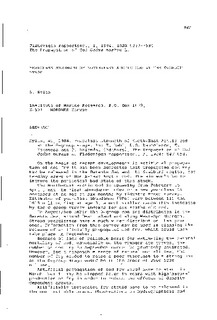| dc.description.abstract | On the basis of recent developments in artificial propagation
of cod fry it has been suggested that propagated cod fry
may be released in the Barents Sea and the Svalbard region, the
feeding areas of North-East Arctic cod. The aim would be to
improve the periodical bad state of this stock.
The North-East Arctic cod is spawning from February to
April, and the first abundance index of a new yearclass is
assessed at an age of six months by midwater trawl survey.
Estimates of year class abundance (VPA) vary between 115 and
1818 million fish at age 3, a much smaller range than indicated
by the 0-group survey indexes for six months old cod.
In August/September the 0-group cod are distributed in the
Barents Sea, around Bear Island and along West-Spitsbergen.
Strong yearclasses have a much wider distribution than poor
ones. Information from this survey may be used in planning the
release of artificially propagated cod fry , which could then
take place in September.
Because of lack of reliable basis for estimating the natural
mortality of cod; especially on the younger age groups, the
number of cod fry in September cannot be precisely estimated.
However, for areas on able range of natural mortalities, the
number of fry needed to raise a poor year class to a strong one
at the 0-group stage would be in the order of 2600-5200
million.
Artificial propagation of cod fry would have to start in
March, but it may be stopped later in years with high natural
production of fry in order to reduce the effects of density
dependent growth.
Artificially propagated fry should have to be released in
the most suit able areas. Observations on hydrographical and
food conditions are therefore needed for the most suitable
time. In order to avoid a high degree of cannibalism, the distribution
of l-3-group cod would also have to be taken into account.
A programme for artificial propagation of North-East Arctic
cod fry would be justifiable in years or periods with low
potential yearclass strength. However, our state of knowledge
about the many factors involved does not at present justify
such an extensive programme. | en |
